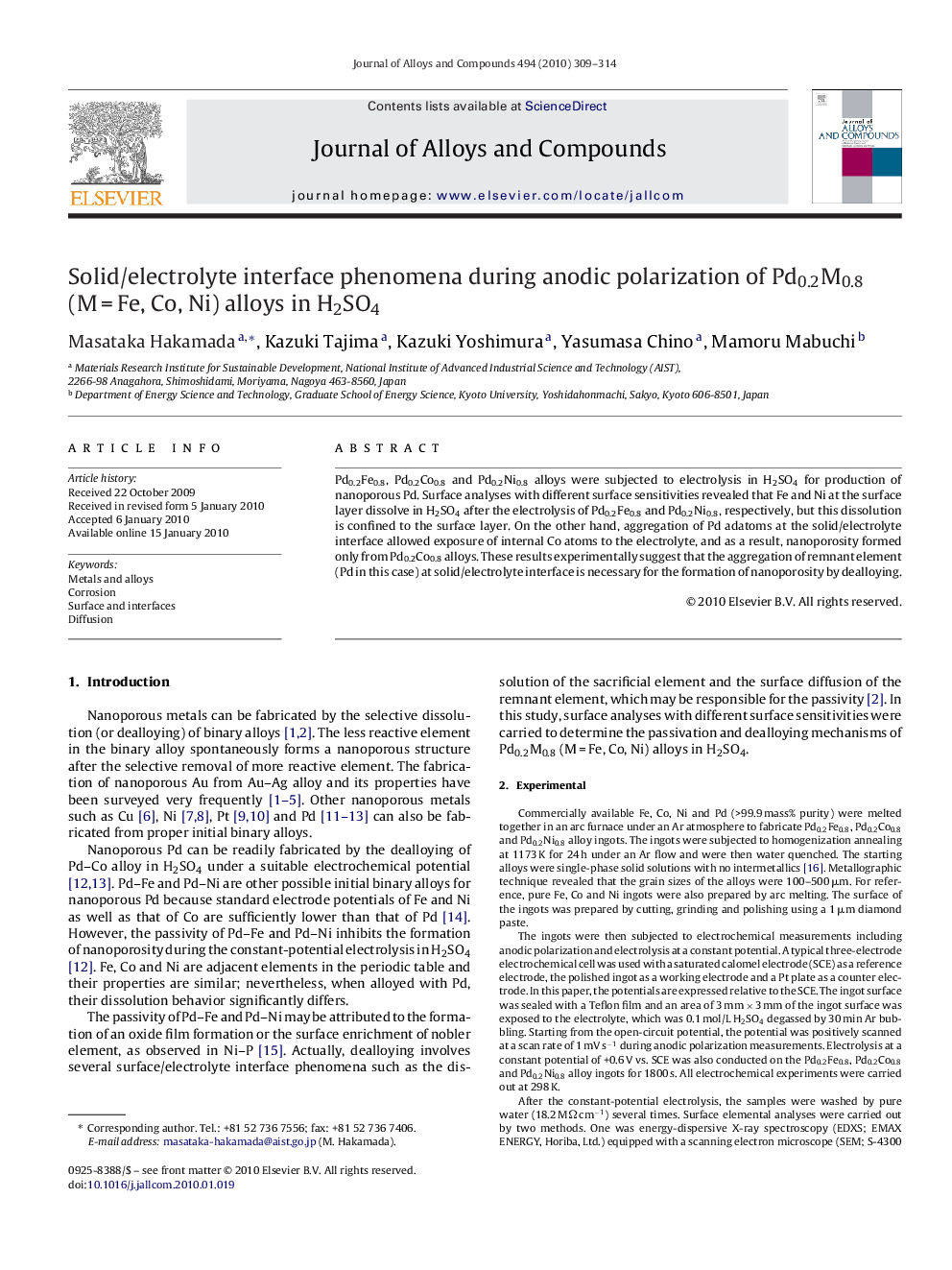| Article ID | Journal | Published Year | Pages | File Type |
|---|---|---|---|---|
| 1620715 | Journal of Alloys and Compounds | 2010 | 6 Pages |
Abstract
Pd0.2Fe0.8, Pd0.2Co0.8 and Pd0.2Ni0.8 alloys were subjected to electrolysis in H2SO4 for production of nanoporous Pd. Surface analyses with different surface sensitivities revealed that Fe and Ni at the surface layer dissolve in H2SO4 after the electrolysis of Pd0.2Fe0.8 and Pd0.2Ni0.8, respectively, but this dissolution is confined to the surface layer. On the other hand, aggregation of Pd adatoms at the solid/electrolyte interface allowed exposure of internal Co atoms to the electrolyte, and as a result, nanoporosity formed only from Pd0.2Co0.8 alloys. These results experimentally suggest that the aggregation of remnant element (Pd in this case) at solid/electrolyte interface is necessary for the formation of nanoporosity by dealloying.
Related Topics
Physical Sciences and Engineering
Materials Science
Metals and Alloys
Authors
Masataka Hakamada, Kazuki Tajima, Kazuki Yoshimura, Yasumasa Chino, Mamoru Mabuchi,
